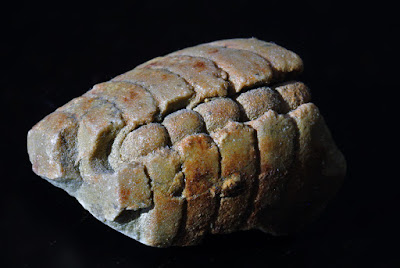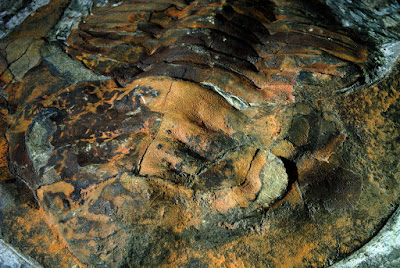"An evolutionary perspective of our place in the history of the earth reminds us that Homo sapiens sapiens has occupied the planet for the tiniest fraction of that planet's four and a half thousand million years of existence. In many ways we are a biological accident, the product of countless propitious circumstances. As we peer back through the fossil record, through layer upon layer of long-extinct species, many of which thrived far longer than the human species is ever likely to do, we are reminded of our mortality as a species. There is no law that declares the human animal to be different, as seen in this broad biological perspective, from any other animal. There is no law that declares the human species to be immortal."
― Richard E. Leakey
Fossil collecting was my very first naturalist field interest. I discovered my first fossils along railroad tracks near John Nolan Drive in Madison when I was around 4 or 5 years old. Such rocks were track ballast, probably obtained from a nearby quarry. It wasn't until the early 1990s that I began exploring quarries to find fossils at more natural-like sources. But after making a judgement error scaling a quarry wall that resulted in a near-death experience, I decided to restrict my collecting to safer locations.
Those pictured here are but a small selection from my fossil collection. There are trilobites, bivalves, brachiopods, gastropods, cephalopods, corals, and more. Most of these were collected on my own, but I have also purchased fossils from Burnie's Rock Shop in Madison and FossilEra.com online. My most expensive purchase was a Megalodon tooth (below), but I won't reveal what I paid for it! I have also collected fossils in a few other states outside of Wisconsin, as well as Nova Scotia in Canada.
Most of these are Paleozoic fossils, in particular the geologic periods from the Cambrian to the Devonian, roughly dating them at 360 to 540 million years. The Megalodon Shark lived between 3.6 and 23 million years ago, so that's actually one of the youngest fossils in my collection.
Ya gotta love trilobites!
A lovely Brachiopod fossil.
The aforementioned Megalodon tooth.
The above fossil is one of my favorites: a Gonioceras nautiloid I found in a quarry south of Oregon, Wisconsin. I discovered it already broken into several pieces, which I successfully glued together. It's nearly impossible to find a complete specimen given their body shape and length, so I'm more than happy there was enough of this one to make a positive identification.
An assortment of bivalve fossils.
Solitary Rugose horn corals are among the most common fossils one can find in southern Wisconsin. The long grooves represent the former positions of septa, which have dissolved away.
A small section of a Dawsonoceras, a nautiloid cephalopod.
A more intact Horn Coral.
Gastropod fossils.
A large polished Ammonite I purchased from Burnie's Rock Shop.
With yet another major snow event, the weekend weather wasn't really conducive for hiking, birding, or outdoor photography, but I thought I'd at least publish something for readers to look at and read. Plus, photographing fossils gave me something to do to pass the time. To be sure, collecting fossils and having an interest in dinosaurs helped shape my naturalistic worldview at a very tender age. Add astronomy to the mix and you have a recipe for comprehending our place in the world and cosmos. Well, at least a rigidly scientific one. Like the above, we are also finite mortal creatures, spending but a micro-blip of time on Earth. Perhaps one day someone or something will uncover and study our remains, eh? As far as Nature goes, extinction is the rule. I have an unrealistic and modicum of hope that we'll find a better path to our species' longevity down the road. But have you watched the news lately?
Right!?
All images © 2021 Mike McDowell
















